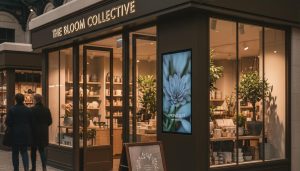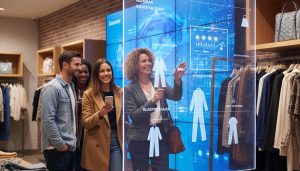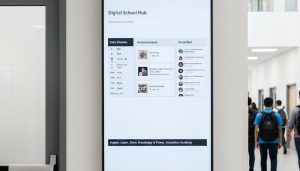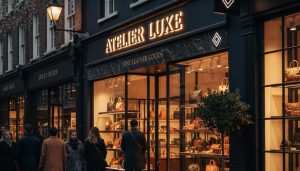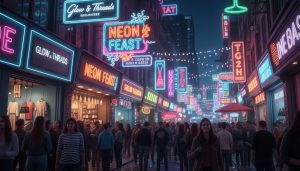In today’s competitive retail market, the ability to capture customer attention quickly and effectively has never been more important. Promotional graphics are one of the most powerful tools available to UK retailers looking to drive footfall, improve customer engagement, and increase sales. When executed correctly, these visuals do more than simply highlight products or offers; they create an environment that guides shoppers through a curated journey, influences their buying decisions, and ultimately strengthens brand perception.
From eye-catching window displays to strategically placed point-of-sale (POS) materials, promotional graphics help retailers communicate value instantly. Research shows that shoppers make many purchasing decisions in-store, often within seconds. High-quality visual communication therefore becomes essential to shaping their choices. Yet many retailers struggle with graphics that fail to convert because they lack clarity, consistency, or strategic placement.
This comprehensive guide breaks down the principles behind designing promotional graphics that not only attract attention but also drive measurable results. We explore visual hierarchy, colour psychology, typography, layout best practices, and the importance of integrating brand identity across all touchpoints. From small independent shops to large UK retail chains, these insights will help businesses maximise their return on investment by transforming simple visuals into persuasive marketing assets.
Understanding the Role of Promotional Graphics in UK Retail
In the UK’s retail landscape, where consumers are continuously exposed to visual stimuli both online and offline, promotional graphics play a vital function in shaping how shoppers perceive offers, navigate stores, and engage with brands. These graphics serve as a direct communication channel, delivering information at the precise moment a shopper is making purchase decisions. From supermarkets and fashion retailers to tech outlets and speciality stores, the power of clear, compelling visuals is universal.
Driving Customer Attention in High-Competition Environments
The UK high street faces intense competition, with customers often comparing prices, offers, and products across multiple stores in a single outing. To stand out, retailers must deploy promotional graphics that provide immediate clarity and visual impact. A well-executed sign or display can halt passers-by, draw them into the store, and create enough curiosity to explore further.
Window graphics, for instance, act as the first point of contact between a brand and potential customers. Retailers that use bold visuals, compelling offers, and strategic placement can significantly increase their conversion potential. The right graphics not only attract attention but also influence the customer’s perception of product value.
Communicating Value Quickly and Effectively
Shoppers often decide within seconds whether an offer is appealing or relevant. This makes the messaging and clarity of promotional graphics crucial. Effective promotional displays simplify decision-making by presenting key information upfront: discounts, product benefits, seasonal offers, and limited-time deals.
The most successful UK retailers focus on graphics that are:
- Clear and concise
- Highly relevant to customer needs
- Easily readable from various distances
- Designed using visual hierarchy to guide the eye
When customers can understand a promotion instantly, they are more likely to explore the product, consider the offer, and complete the purchase.
Building a Consistent Brand Experience
Beyond driving sales, promotional graphics also play a key role in reinforcing brand identity. Consistent colours, fonts, tone of voice, and design elements help retailers create a cohesive visual experience that customers recognise and trust. This consistency is especially important for UK retailers operating across multiple locations.
Brand-aligned promotional materials create familiarity, which increases customer confidence. When a customer sees unified, high-quality visuals, they are far more likely to perceive the brand as trustworthy and professional.
Supporting In-Store Navigation and Customer Flow
In busy retail spaces, customers rely on visual prompts to navigate aisles, explore collections, and locate promotional offers. Strategic placement of promotional graphics can significantly improve the flow of customer movement, guiding shoppers intuitively toward highlighted products.
Point-of-sale displays, floor graphics, hanging signs, and shelf-edge labels all contribute to a seamless customer journey. When used effectively, these elements reduce confusion, improve satisfaction, and enhance the overall shopping experience.
Key Elements of Effective Promotional Graphics Design
To create promotional graphics that genuinely convert, UK retailers must look beyond aesthetics and consider how design choices influence shopper behaviour. Effective visuals are strategic, intentional, and highly customer-centric. Below are the key elements that shape promotional graphics that not only look good but also drive measurable results.
1. Clear Messaging and Hierarchy
A promotional graphic must deliver its message in seconds. This requires a strong visual hierarchy, ensuring the most important information stands out. Shoppers should instantly understand:
- What the promotion is
- How much they can save
- Which products it applies to
- Whether it is time-limited
Techniques such as bold typography, contrasting colours, and strategic spacing help ensure the message is clear even from a distance.
2. Colour Psychology and Contrast
Colour selection plays a major role in making promotional graphics noticeable and persuasive. In UK retail environments, where consumers are accustomed to fast-moving promotions, the right colour palette can immediately convey urgency, value, or premium quality.
For example:
- Red often signals urgency or sales.
- Blue conveys trust and stability.
- Green works well for eco-friendly or health-related promotions.
- Yellow draws attention and communicates optimism or affordability.
High contrast between text and background is essential for legibility, particularly in bright or visually cluttered spaces.
3. Strong Visuals and High-Quality Imagery
Product images, illustrations, or graphical elements must be high resolution and professionally aligned with the brand’s style. Blurry or poorly edited images quickly reduce credibility. Retailers should ensure all visuals support the promotional message without overwhelming it.
High-quality imagery also sets customer expectations — especially in categories like fashion, beauty, home décor, and technology, where visuals can strongly influence buying decisions.
4. Brand Consistency and Recognition
Every piece of marketing material should reflect the retailer’s visual identity. This consistency helps customers quickly recognise the brand across all touchpoints — storefronts, social media, in-store displays, and product packaging.
To maintain consistency, UK retailers should define brand guidelines covering:
- Colour palettes
- Typography
- Logo usage
- Layout styles
- Tone of voice
Even promotional materials should never feel detached from the core brand identity.
5. Compliance with UK Accessibility Standards
The UK Equality Act requires businesses to consider accessibility, including how information is presented visually. Promotional graphics must be readable for customers with visual impairments, dyslexia, or colour vision deficiencies.
Retailers should consider:
- Sufficient font sizes
- Strong colour contrast
- Clear, simple language
- Avoiding colour-coded information without text
Accessible design is not only a legal responsibility but also enables more customers to engage with promotions.
6. Placement and Visibility
Even the best-designed promotional material fails if placed poorly. Retailers must consider:
- Height and angle of display
- Lighting conditions
- Customer traffic flow
- Competing visuals nearby
The highest-converting promotional graphics are placed at eye level, near decision points (like aisles, shelves, and checkouts), and in locations where they do not compete with clutter.
How Promotional Graphics Influence Customer Psychology
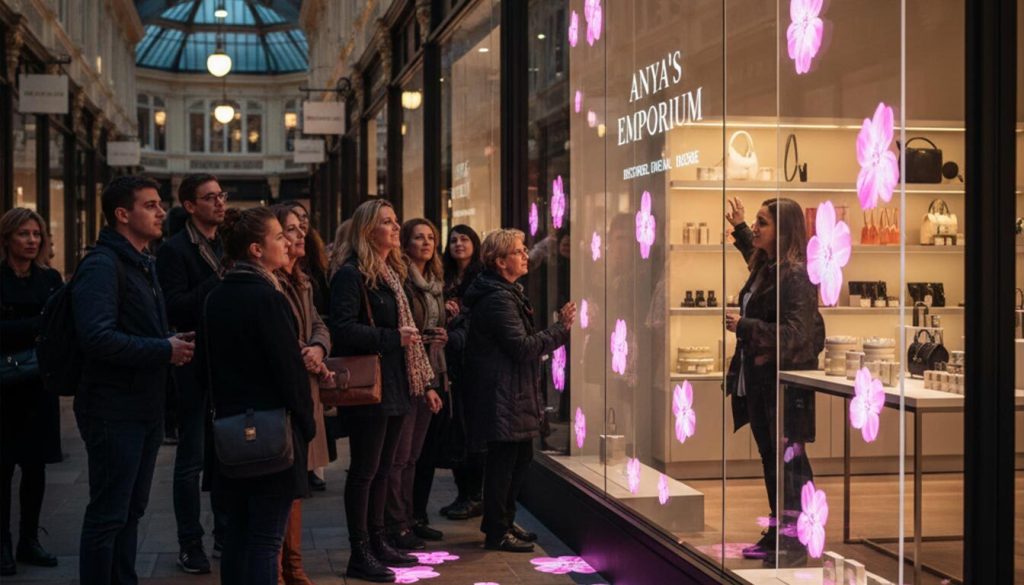
Understanding shopper psychology is essential for designing promotional graphics that inspire action. Retail behaviour is shaped by visual cues, emotional triggers, and cognitive shortcuts. When graphics are strategically crafted, they tap into these psychological patterns and significantly increase conversions in UK retail environments.
1. The Power of Visual Attention
Human brains process visual information far faster than text. This means well-designed promotional graphics can influence decisions before a shopper even realises it. Effective visuals use:
- Strong colour contrast
- Large, persuasive headlines
- Directional cues (arrows, shapes, lines)
- Eye-catching product imagery
These elements guide the shopper’s gaze to the most important information, such as discounts or limited-time offers.
2. Scarcity and Urgency Triggers
UK shoppers respond strongly to signals of scarcity and urgency — psychological triggers that create a fear of missing out. Promotional graphics often use messages such as:
- “Limited stock”
- “Ends today”
- “Last chance”
- “Exclusive offer”
Paired with bold colours and concise typography, these cues accelerate decision-making and reduce hesitation.
3. Price Anchoring and Perceived Value
Anchoring is a cognitive bias where customers rely heavily on the first piece of information they see — usually the original price. Effective promotional graphics highlight:
- Before and after prices
- Savings expressed in pounds and percentages
- “Compare at” versus “You pay” price tags
Displaying the original price in a larger, bold style helps the discounted amount appear more significant, increasing the perceived value of the promotion.
4. Emotion-Driven Buying Behaviour
Most purchases, even rational ones, are influenced by emotion. Promotional graphics that evoke feelings of excitement, joy, or aspiration are more likely to convert. For example:
- Warm colours evoke optimism
- High-energy graphics spark urgency
- Clean, minimalist visuals communicate premium quality
- Family-oriented imagery fosters trust and connection
Aligning emotional tone with the brand and product category enhances relevance and impact.
5. Social Proof and Trust Signals
Shoppers are more likely to convert when they feel reassured about the value of their purchase. Promotional graphics can include trust-enhancing elements such as:
- “Best seller” labels
- “Top rated” icons
- Customer review highlights
- Award badges
- Certifications or accreditations
These signals reduce uncertainty and encourage impulse purchases.
6. Behavioural Flow and In-Store Navigation
Promotional graphics also influence how customers move through a store. Clever placement can:
- Draw shoppers into high-margin zones
- Encourage exploration of new products
- Guide them towards promotional aisles
- Direct attention to seasonal or clearance collections
Graphics that align with shopper flow naturally increase dwell time and boost overall sales.
Types of High-Converting Promotional Graphics for UK Retailers
Different types of promotional graphics serve different customer touchpoints. By choosing the right format for the right environment, UK retailers can maximise visibility, engagement, and conversions. Below are the most effective types of promotional materials used in modern retail spaces.
1. Window Graphics and Storefront Displays
Window graphics are one of the strongest tools for attracting foot traffic. Visible from a distance, they:
- Announce major sales
- Highlight seasonal promotions
- Communicate brand identity
- Set customer expectations before entry
Bold colours, concise messages, and compelling imagery make storefront graphics powerful conversion drivers in high-street retail locations.
2. Point-of-Purchase (POP) Displays
POP displays are placed near the checkout area or beside high-demand products. They are especially effective for:
- Impulse buys
- Small accessories and add-ons
- Limited-time offers
- New product launches
Because customers are already in buying mode, POP promotional graphics often achieve some of the highest conversion rates.
3. Shelf Talkers and Aisle Graphics
Shelf-level graphics connect directly to the purchasing moment. They help shoppers quickly identify value, especially in crowded categories such as groceries, health & beauty, and home goods.
Benefits include:
- Direct product-to-promotion association
- Better visibility at eye or hand level
- Quick decision-making support
Shelf talkers are particularly popular in UK supermarkets and pharmacy chains.
4. Floor Graphics and Directional Signage
Floor graphics guide shoppers intuitively through the store while promoting offers along the path. They are ideal for:
- Highlighting promotional zones
- Directing customers to new arrivals
- Increasing exposure to seasonal merchandise
These graphics take advantage of natural footfall patterns and are highly visible in large stores and shopping centres.
5. Digital Screens and Animated Displays
Digital promotional graphics bring movement and flexibility that static materials cannot match. They allow retailers to:
- Rotate multiple promotions
- Show video or animation
- Update offers instantly
- Personalise messaging at different times of day
Digital screens are increasingly common in fashion chains, tech retailers, and supermarkets across the UK.
6. Hanging Banners and Overhead Signage
Overhead signage captures attention from anywhere in the store. Retailers use them to:
- Announce storewide promotions
- Highlight key product categories
- Build brand atmosphere
- Direct shoppers to specific sections
Large-format displays are especially effective in warehouses, furniture retailers, and lifestyle stores.
7. Promotional Packaging and Product Stickers
Packaging can also act as a promotional tool. Discount stickers, limited-edition labelling, and offer-based inserts help influence purchasing decisions right at the shelf.
These are commonly used for:
- Seasonal promotions
- Multibuy offers
- Exclusive bundles
- Clearance items
Simple but highly effective, promotional packaging often delivers measurable uplift in conversions.
Designing Promotional Graphics for Different UK Retail Environments
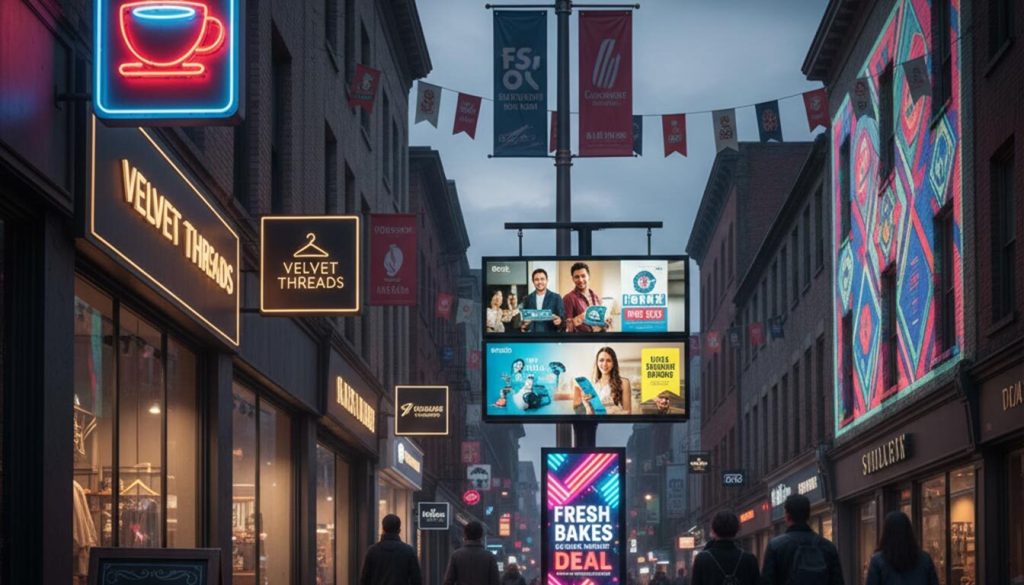
Every retail space comes with unique challenges and customer behaviours. This means promotional graphics must be tailored to the specific environment in which they’ll be displayed. The design approach for a busy high-street store differs significantly from that of a quiet boutique or a large retail warehouse. Below are essential considerations for different UK retail settings.
1. High-Street Stores
High-street environments are fast-paced, highly competitive, and visually crowded. Promotional graphics must be bold, concise, and instantly understandable.
Key strategies include:
- High-contrast colour palettes
- Short promotional messages
- Large-format window graphics
- Seasonal updates aligned with footfall patterns
Because shoppers make quick decisions, graphics must capture attention even from across the street.
2. Shopping Centres and Malls
Indoor retail spaces offer more controlled lighting and footfall patterns. This allows for more detailed and creatively designed promotional graphics.
Effective features include:
- Illuminated signage
- Hanging banners
- Floor graphics directing shoppers to promotions
- Multi-panel product displays
Shoppers in malls spend more time browsing, so visuals can include richer detail.
3. Supermarkets and Grocery Stores
Supermarkets rely heavily on promotional graphics to influence consumer behaviour, often at the shelf level. Since shoppers are used to comparing prices, clarity and legibility are essential.
Supermarket-focused design should use:
- Bold discount labels
- Large price typography
- Category-specific colour coding
- Pop-up shelf talkers for impulse buys
Clear communication at the point of decision dramatically enhances conversion rates.
4. Fashion and Lifestyle Retailers
Fashion retailers depend on brand emotion and aesthetic appeal. Promotional graphics must elevate the brand while still driving sales.
Effective approaches include:
- Minimalistic, stylish layouts
- High-quality model photography
- Cohesive seasonal themes
- Soft, premium colour tones
Designs should complement store ambience, not overpower it.
5. Retail Warehouses and Home Improvement Stores
Large retail warehouses (DIY stores, furniture outlets, electronics warehouses) depend on a combination of wayfinding and promotional messaging.
Graphics must focus on:
- Oversized banners for visibility at long distances
- Clear directional signage
- Product comparison charts
- Strong category markers
The scale of the space requires boldness and clarity above all.
6. Boutiques and Small Shops
Smaller stores often aim for a personalised, intimate experience. Promotional graphics should reflect that tone.
Effective elements include:
- Handwritten-style typography
- Warm, soft colour palettes
- Minimal clutter
- Custom tags and decals
These choices support a friendly and curated shopping atmosphere.
7. Outdoor Retail Promotions
Pop-up shops, markets, and outdoor sales events require durable, weather-resistant promotional graphics. Designs must remain legible in bright sunlight or rain.
Key design choices include:
- UV-resistant materials
- Weatherproof inks
- High-brightness colour palettes
- Sturdy standees and banners
Outdoor promotional graphics must survive the elements while staying visually compelling.
Common Mistakes Retailers Make with Promotional Graphics (and How to Avoid Them)
Many UK retailers invest in promotional graphics but fail to achieve the conversions they expect simply because the designs do not align with shopper behaviour, store layout, or visual communication principles. One of the most common mistakes is overcrowding graphics with too much information. Retailers often feel pressured to include every detail in a single visual, which leads to cluttered designs that confuse shoppers instead of guiding them. Clear, concise messaging is far more effective than overwhelming viewers with multiple promotional claims at once. Another frequent issue is poor colour selection or contrast, which can make text difficult to read. Low-contrast designs may look aesthetically pleasing at close range but fail to attract attention from a distance, especially in busy retail environments where competing visuals surround the shopper.
Brand inconsistency is also a significant problem. When promotional graphics deviate from established brand colours, fonts, or design styles, the retailer risks reducing recognition and trust. Consistency across all visuals helps customers immediately associate the promotion with the brand, reinforcing identity and credibility. Similarly, using low-quality images can diminish the professionalism of a promotion. Blurry product photos or pixelated graphics signal poor attention to detail and can damage shoppers’ perception of product value. High-resolution images and professional editing are essential for maintaining a polished presentation.
Another mistake involves ignoring store layout and traffic flow. Even the most well-designed promotional graphic will underperform if it is placed in the wrong location. Some retailers position key visuals too high, too low, or in areas where customers naturally do not look. Effective promotional graphics must be displayed where shoppers pause, enter decision-making zones, or move through high-traffic paths. Printing and material choices also matter. Using flimsy or unsuitable materials can result in graphics fading, tearing, or peeling, which not only affects longevity but also sends a negative message about brand quality. Retailers must select materials suited to the environment—whether indoor, outdoor, sun-exposed, or high-humidity spaces.
Finally, failing to consider accessibility and readability is a pervasive issue. Small fonts, overly stylised typography, and complex layouts can make promotional graphics difficult to understand for customers with vision impairments or reading challenges. In the UK, where accessibility standards are increasingly emphasised, inclusive design is not only a legal expectation but also a practical way to reach more shoppers. Avoiding these mistakes requires a thoughtful, customer-centred approach where design clarity, strategic placement, and brand coherence are prioritised.
How to Measure the Success of Your Promotional Graphics
Measuring the performance of promotional graphics is essential for understanding whether your designs are driving meaningful results or simply occupying visual space. The most effective UK retailers treat promotional graphic campaigns as measurable marketing investments rather than decorative displays. Evaluating success begins with analysing customer engagement in-store. This can include observing how shoppers interact with the promoted products, whether footfall increases in the relevant sections, and how long customers spend browsing after encountering the graphic. Even subtle behavioural changes, such as improved product visibility or increased shelf interaction, can indicate that the graphics are working.
Sales data remains the most definitive indicator of performance. Retailers often compare sales figures before and after installing new promotional graphics to determine their direct impact. If a particular display correlates with a noticeable uplift in sales or helps clear seasonal stock more effectively, it demonstrates that the promotional strategy is resonating with customers. Some retailers also track conversion rates for specific campaigns, examining whether customers who engage with a promotional message proceed to make a purchase. This helps identify which design styles or messaging types are most persuasive for their target audience.
Customer feedback is another invaluable tool for measuring success. Many retailers encourage shoppers to share their thoughts through in-store surveys, digital review platforms, or social media engagement. Feedback often reveals whether the graphic was easy to understand, visually appealing, or relevant to the customer’s needs. Sometimes, customers highlight confusion or suggest that the message was unclear, providing insights for future improvements. Retail teams working on the shop floor also offer practical observations, as they see firsthand how customers respond to promotional materials.
Digital and omnichannel retailers can measure success through online metrics linked to in-store campaigns. For example, QR codes embedded into promotional graphics can track how many customers scanned the code, visited a landing page, or redeemed a promotional offer online. These metrics reveal how well physical marketing materials integrate with digital engagement strategies. Additionally, eye-tracking studies, heat maps, and customer-movement data from smart retail technologies provide deeper insights into how shoppers visually interact with different promotional elements.
Ultimately, the most successful retailers use ongoing measurement to refine their promotional graphic strategy. By learning which colours, messages, placements, and designs perform best, businesses can continuously adapt their visuals to meet evolving customer expectations. Effective measurement transforms promotional graphics from guesswork into a data-driven solution that consistently supports sales growth.
The Role of Professional Graphic Production in Retail Success
Professional graphic production plays a critical role in ensuring that promotional graphics achieve their full potential in driving customer engagement and sales within UK retail environments. While many retailers design their own visuals in-house, the difference in quality between amateur production and specialist graphic services is significant. Professionally produced graphics benefit from advanced printing technology, high-quality materials, and precision colour matching, ensuring that every visual element appears sharp, vibrant, and consistent across different formats. This level of quality not only enhances aesthetic appeal but also reinforces brand professionalism and customer trust.
A key advantage of professional production lies in material durability. Retail spaces—particularly high-traffic locations such as supermarkets, shopping centres, and outdoor retail zones—demand materials that can withstand wear, moisture, sunlight, and fluctuating temperatures. Professional signage companies offer substrates and finishes designed specifically for retail conditions, ensuring that promotional graphics remain intact, readable, and visually appealing for the entire duration of a campaign. This avoids issues such as peeling edges, fading colours, or distorted images, all of which can negatively affect brand perception.
Accuracy and consistency are equally important. Retailers often require a suite of promotional graphics—window decals, shelf talkers, floor graphics, hanging banners, and digital displays—to run simultaneously for the same promotion. Professional production ensures that colours align across all assets, typography remains consistent, and every graphic reflects the retailer’s core identity. Inconsistent colours or mismatched design elements can dilute brand recognition and undermine the impact of the promotion.
Another essential element is technical expertise. Professional producers understand the physical constraints and installation requirements of retail spaces. They ensure that every graphic is sized correctly, scaled without distortion, and installed safely and securely. Whether working with glass, metal, concrete, or textured walls, professional installers apply the right adhesives, mounting techniques, and protective coatings to maintain both longevity and safety. Poor installation can lead to misaligned graphics, air bubbles, or graphics that fall off—not only creating a poor customer experience but also posing potential safety risks.
Moreover, professional production teams excel in translating marketing ideas into practical, high-impact retail visuals. They often collaborate with marketing departments, store managers, and brand designers to refine colours, messaging, and placement strategies. Their insight ensures that promotional graphics are not only visually impressive but also strategically positioned to influence customer behaviour. Whether the goal is to highlight a seasonal sale, promote a new product line, or improve the navigation flow of a store, professional graphic producers bring both creative and technical value to the process.
Ultimately, investing in professional production elevates the effectiveness of promotional campaigns and strengthens brand identity across the entire retail environment. For UK retailers seeking sustained growth and consistent customer engagement, professional production is not an added expense—it is a strategic asset that directly contributes to sales performance.
Promotional Graphics That Convert: Design Tips for UK Retailers – Summary for Msigns
This blog explores how UK retailers can maximise impact through strategic promotional graphics. It highlights the importance of aligning design with shopper psychology, location-specific visibility, and seasonal relevance. Key takeaways include:
- Bold, legible typography and high-contrast colours to capture attention in busy retail environments
- Strategic placement of graphics near entrances, checkout zones, and high-footfall areas
- Use of directional cues and call-to-action phrases to guide customer behaviour
- Consistency with brand identity across signage, posters, and window displays
- Adapting visuals for sales cycles, holidays, and local events to boost engagement



